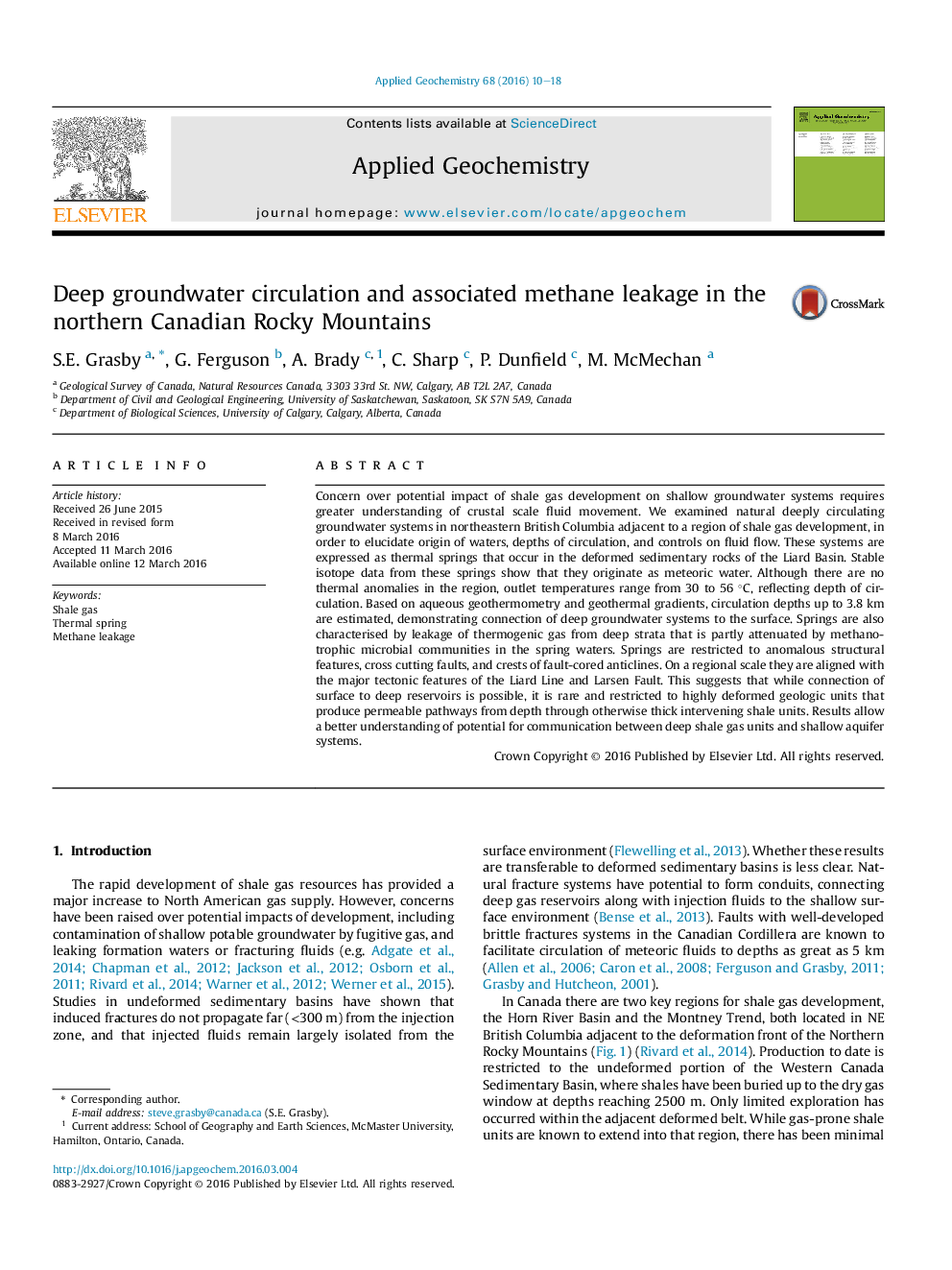| کد مقاله | کد نشریه | سال انتشار | مقاله انگلیسی | نسخه تمام متن |
|---|---|---|---|---|
| 4435567 | 1620223 | 2016 | 9 صفحه PDF | دانلود رایگان |
• Deep groundwater systems were studied near active shale gas development.
• Natural fracture systems allow circulation of meteoric water to depths of 3.8 km.
• Deep circulation systems occur, but are rare in even highly deformed rocks.
Concern over potential impact of shale gas development on shallow groundwater systems requires greater understanding of crustal scale fluid movement. We examined natural deeply circulating groundwater systems in northeastern British Columbia adjacent to a region of shale gas development, in order to elucidate origin of waters, depths of circulation, and controls on fluid flow. These systems are expressed as thermal springs that occur in the deformed sedimentary rocks of the Liard Basin. Stable isotope data from these springs show that they originate as meteoric water. Although there are no thermal anomalies in the region, outlet temperatures range from 30 to 56 °C, reflecting depth of circulation. Based on aqueous geothermometry and geothermal gradients, circulation depths up to 3.8 km are estimated, demonstrating connection of deep groundwater systems to the surface. Springs are also characterised by leakage of thermogenic gas from deep strata that is partly attenuated by methanotrophic microbial communities in the spring waters. Springs are restricted to anomalous structural features, cross cutting faults, and crests of fault-cored anticlines. On a regional scale they are aligned with the major tectonic features of the Liard Line and Larsen Fault. This suggests that while connection of surface to deep reservoirs is possible, it is rare and restricted to highly deformed geologic units that produce permeable pathways from depth through otherwise thick intervening shale units. Results allow a better understanding of potential for communication between deep shale gas units and shallow aquifer systems.
Journal: Applied Geochemistry - Volume 68, May 2016, Pages 10–18
